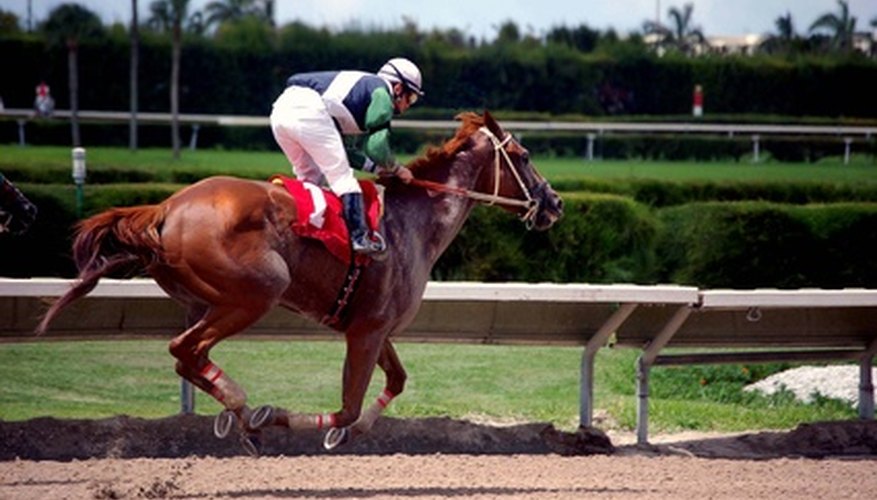On English and Australian saddles, girths keep the saddle in place on a horse. Passing around the barrel of the horse, the girth both holds the saddle in the proper position. When racing, an additional piece of equipment, called the overgirth or surcingle, provides additional security in holding the saddle. Made of nylon or leather, the overgirth features an elastic insert for racing.
Prepare the horse for the blanket and saddle. Halter the horse and tie the lead rope to a hook, fence or hitching post. Use a curry comb on the main body of the horse. Brush with a stiff brush in short strokes to remove dirt, dust and debris from the horse's main body. Follow up with a soft brush on the lower legs and face of the animal. Inspect and clean hooves thoroughly with a horse pick and brush.
- On English and Australian saddles, girths keep the saddle in place on a horse.
- Use a curry comb on the main body of the horse.
Place the saddle blanket just in front of the horse's withers. Slide the entire blanket backwards until it is in the proper position just behind the withers and shoulders of the horse. Check to see that the blanket hangs equally on each side of the horse.
Place the saddle on top of the blanket so that the front part of the saddle is just behind the withers and the horse's shoulders when the leg is extended. The back of the saddle should not extend behind the last ribs of the horse. Imagine a line drawn from neck to tail, and centre the saddle in the middle of the horse's back based on that line.
- Place the saddle blanket just in front of the horse's withers.
- Imagine a line drawn from neck to tail, and centre the saddle in the middle of the horse's back based on that line.
Buckle the main girth as normal. Unlike traditional English and Australian saddles, racing saddles girths have only one buckle. Many riders, trainers and grooms will walk the horse around or to the arena or track before the final tightening of the main girth. This allows the horse to expel any air that may prevent proper adjustment. Make all final adjustments to the main girth before adding the overgirth. The overgirth will prevent the adjustment of the main girth.
Buckle the overgirth around the horse, over the saddle flaps and saddle seat. Locate the overgirth directly over the main girth, so that the main girth is completely hidden by the overgirth. Position the buckle on the overgirth on the left side at approximately halfway down the side of the horse, usually equal with the bottom of the blanket.
Adjust the overgirth so that it fits snug over the main girth by pulling the strap tightly through the buckle in an upward motion. Secure the buckle. Do not adjust the overgirth tighter than the main girth.
- Buckle the overgirth around the horse, over the saddle flaps and saddle seat.
- Adjust the overgirth so that it fits snug over the main girth by pulling the strap tightly through the buckle in an upward motion.
Thread the strap through the keepers located underneath the horse on the elastic portion of the overgirth.
WARNING
Improperly placed and overly tight girths may cause girth rubs and sores. Double check your girths and overgirths before riding if someone else saddled the horse. Some horses require additional girth adjustments after periods of exercise or warming up. Inspect all tack before riding in order to identify any problems such as weak stitching, tears or broken rigging. These issues may lead to potential for tack failure during riding. Wear proper safety helmets when riding horses.
